Journal of Neurology, Neurological Science and Disorders
Variations of shape, length, branching, and end trunks of M1 segment of middle cerebral artery
Valvita Reçi* and Sadi Bexheti
Cite this as
Reci V, Bexheti S (2019) Variations of shape, length, branching, and end trunks of M1 segment of middle cerebral artery. J Neurol Neurol Sci Disord 5(1): 052-056. DOI: 10.17352/jnnsd.000034Introduction: The middle cerebral artery is divided into four segments: proximal M1, insular M2, opercular M3 and cortical M4. M1 extends from the bifurcation point of ACI at ACA and ACM to the insula threshold, laterally from chiasma opticum, laterally from tractus opticus and caudally from trigonum olfactorium, directed laterally, dorsally and rostrally. Early division of the M1 segment into the final trunk is possible at any of the first points of the limb insulae.
Material and methods: The study of the micromorphological and morphometric characteristics of the M1 segment was performed in 25 brain (50 ACM preparations) obtained from autopsy of both sexes of different ages without pathological changes. For the removal of the brain from the skull we used the usual technique of obduction.
Results: This segment was arch-shaped, in 32 (64%) arteries, rarely S-shaped, in 12 (24%) arteries, much less straight alignment, in 6 (12%) arteries. The average length of the M1 segment of the S shape was 20.6±3.31mm, with a 19.8mm 4.41mm arch shape, while the straight shape was 16.9±3.62mm. The average S-shaped diameter was 2.7±0.51mm, arched 2.6±0.47mm, straight form 2.6±0.36mm. Variations of M1 branching were: common in 38 cases, early branching in 12 cases, joint trunk with cortical branch in 9 cases, lateral cortical branch in 21 cases, final bifurcation in 24 cases, final trifurcation in 13 cases, duplication in 1 case and M1 accessory in just 1 case.
Conclusion: True bifurcation refers to the division of the M1 segment into two final trunks. In cases where the strong joint cortical branch trunk divides from segment M1, while dividing into two terminal trunk immediately after ACM knee formation, it is described as false branching of M1 segment into three terminal branches.
Introduction
Middle cerebral artery (ACM), in addition to anterior cerebral artery (ACA), is the largest, lateral branch of the internal carotid artery, a. carotis interna (ACI) [1]. It is divided into the fusion of the carotid cistern (cisterna carotica) and the Sylvii cistern of the lateral hull of the large brain (cisterna fossae lateralis cerebri). Further down of its path, lies at the outer cavity of the large brain (fossa lateralis cerebri), between the temporal and frontal lobe of the telencephalon. On the surface of the insula, where the ACM is located, it is divided into two, three or more primary trunks, which are further subdivided and from which the cortical (leptomeningeal) branches will be separated. After exiting the operculo-insular region, through Sylvius furrow, the breeze-shaped cortical branches head toward their vascularization field [2-4] (Figure 1).
It is accepted to divide the ACM into four parts: the proximal part, pars sphenoidalis s. horisontalis (segmentum M1), insular, pars insularis (segmentum M2), opercular, pars opercularis (segmentum M3) and cortical, pars corticalis (segmentum M4) [5].
The proximal (M1) segment extends from the ACI and ACM bifurcation point to the insula threshold (limen insulae). The M1 segment of the ACM extends laterally from the chiasma opticum, rostrally from the tractus opticus and caudally from the trigonum olfactorium, directed laterally, dorsally and rostrally. Dorsally to the M1 segment is the outer part of the substantia perforata anterior, the prepiriform part of the cortex of large brain and stria olfactoria lateralis, while the posterior edge of the small wing of the sphenoidal bone (ala minor ossis sphenoidalis) is rostrally to the artery. At the level of the limen insulae the M1 segment immediately turns dorsally and caudally and forms the ACM knee. Early division of the M1 segment into the terminal trunk is possible at any of the first points of the insula. 2.5% to 21% of cases are described [6-8] (Figure 2).
Material and Methods
The study of the micromorphological and morphometric characteristics of the M1 segment of the middle cerebral artery and its branches was performed in 25 brain (50 ACM preparations) obtained from autopsy of both sexes (11 females and 14 males), aged different (from 46 to 84 years, 68.4 on average) without pathological changes of brain structures. For the removal of the brain from the skull we used the usual technique of abduction.
Microdissection of the trunk and injected perforant branches of the M1 segment of ACM and all measurements were done on the Leica MZ6 stereomicroscope. All the preparations were photographed with the SX170IS digital camera, and all details were recorded under a stereomicroscope using the Leica DFC295 digital camera. For the morphometric analysis, Leica Interactive Measurements software was used (Figure 3.5). The perforant branches of the M1 segment of the ACM and the topographic ratios of the surrounding arteries are shown in the diagrams prepared in advance.
For evaluating the significance of the obtained data we used descriptive and statistical analytical methods, especially the determination of absolute and relative frequencies, as well as the arithmetic mean with standard deviation, as well as the quadratic test and Studen T-test for evaluating the significant differences. All data attempted are tabular and graphical.
Results and Discussion
We studied the M1 segment of the ACM in 50 arteries. This segment was in most cases arch-shaped, in 32 (64%) artery (I), rarely in S-shaped, in 12 (24%) artery (II), whereas much less frequently it had straight alignment, in 6 (12%) of arteries (III) (Table 1) (Figures 4.1-4.3). Segment M1 most commonly had lateral orientation, slightly rostrally and dorsally 28 (56%), less frequently laterally and rostrally 12 (24%) or laterally and ventrally 10 (20%) (Table 1).
The corresponding results are also presented graphically (Graphs 1,2). In the records of cerebral angiography, the authors [9] recorded horizontal position in 47% cases, ventrolateral in 19.5% or dorsolateral in 14.0%, and also with ventral 18,0% or dorsal curve in 1.5% cases.
The average length of the M1 segment of S shape, was the largest, 20.6±3.31mm, from 15.3mm to 28.2mm. The M1 arc-shaped segment had a length of 19.8±4.41mm, from 14.3mm to 27.2mm. The shorter length had the straight shape of the segment M1, without curves, averaging 16.9±3.62 mm, from 11.8 to 21.6 mm (Figures 3-6) (Table 2).
According to the other authors data [12,14], the average length of this segment was 15.4 mm, respectively 15.5mm. On the other hand, Yasargil [3] emphasized the extension of 0 mm to 30 mm length. The explanation of this distinction is simple. We have measured the distance from the carotid branch to the knee of the ACM, respectively to the limen insulae, the entire length of the M1 segment, while other authors have measured only the shorter linear distance.
Our measurements have shown that the mean diameter of the S-shaped M1 segment was 2.7±0.51mm, from 1.9mm to 3.5mm, respectively. The M1 arc-shaped segment had an average diameter slightly smaller, 2.6±0.47mm, from 1.8mm to 3.6mm. Similar diameter values also had the straight shape of the M1 segment, without curves, averaging 2.6±0.36mm, from 1.9mm to 2.9mm. In all 50 observed hemisphere, the mean diameter of the M1 segment was 2.6±0.47mm, from 1.8mm to 3.6mm (Table 2) (Graph 3).
Other authors cite extreme values of 2.4mm to 4.6mm, on average 3.0mm, 3.9mm, respectively [9-11]. It is evident that there are differences between the data from different authors. Our obtained data are slightly smaller, however, all of our measurements were made on gelatin-injectable preparations using reliable measurement software and the results are accurate. Measurements in native preparations as well as blood vessels in angiography could not be more accurate than our data. Other authors [13-15] also do not provide data on the forms of the M1 segment, and also in the literature there is no data on the size of different morphological types of the M1 segment.
Variations of length, branching and trunk of segment M1
We describe two length variations of M1 segment:
1) Common M1 segment, which most commonly ends at the level of the insula threshold (limen insulae), in 38 (76%) hemispheres, at the place where the knee is formed, a flexure of 90˚. Its length was from 15.1mm to 28.2mm (21.2±3.54mm on average). The diameter of the M1 segment in these cases ranged from 1.8mm to 3.6mm (2.6±0.45 on average). The artery then immediately turns backwards and above, and passes into the M2 insular segment through the insula cortex, where it gives the upper and lower common trunk of the cortical branches (Figure. 4.8 A, 4.1, 4.2) (Table 3) (Graph 4).
2) Early branching of the M1 segment was observed in 12 (24%) hemispheres. In these cases, the short M1 segment gives the final branch in front of the ACM knee, medially from the limen insulae. The length of this segment, measured from carotid bifurcation to ACM terminal branching, ranged from 11.8mm to 16.5mm (14.9±1.2mm on average). The diameter of the M1 segment in these cases ranged from 1.9 to 3.5mm (2.7 ,5 0.51mm on average) (Figures 4.8 B, 4.3, 4.4) (Table 3) (Graph 4).
We also describe three possible variations of M1 segment branching:
1a) Separation of the strong common trunk of cortical branches of the M1 segment that we have encountered in 9 (18%) cases (Figure 7).
1b) Individual leptomeningeal branches larger than 1.0 mm in diameter, are also directly separated from the M1 segment into 21 (42%) hemispheres, most often a. anterior temporalis, a. temporalis media and a. frontobasalis. The most constant and smallest cortical branch of the M1 segment, smaller than 1.0 mm in diameter, was a. polaris temporalis, which was present in 47 (94%) cases (Figure 8 C, 4.2) (Table 3) (Graph 4).
2a) Two end trunks of M1 segment, upper and lower, of the same caliber, were present in 8 (16%) cases (Figures 4.8 D, 4.4) (Table 3) (Graph 4).
2b) The upper trunk of the M1 segment with the largest caliber was found in only 5 (10%) hemispheres (Figures 4.8 E, 4.3) (Table 3) (Graph 4).
2c) The final lower trunk of the M1 segment with a larger caliber has been more frequently present, in 24 (48%) cases (Figure 8 F) (Table 3) (Graph 4).
3) M1 segment trifurcation, upper, middle and lower trunk, was present in 13 (26%) hemispheres (Figure 8 G) (Table 3) (Graph 4).
Conclusion
Most authors emphasize that true branching (“true bifurcation”) belongs to the division of the M1 segment into two almost identical end-trunks. On the other hand, in cases where the strong common trunk of cortical branches divides from the M1 segment, while the rest of the artery continues its course and divides into two terminal trunks immediately after the formation of ACM knee, dorsally and caudally by the limen insulae, is described as false branching of M1 segment into three terminal branches. Some authors even mention also the trifurcation, sometimes and the tetrafurcation ACM, respectively, the existence of three or four final trunks. By doing so, while the false branching is immediately proximal to the final branching, it gives the wrong impression of the existence of three terminal ACM trunks.
- Moore K, Dalley A, Agur A (2010) Clinically oriented anatomy.New York: Wolters Kluwer Health. Link: http://bit.ly/2QDkJeV
- Yasargil MG (1984) Microneurosurgery II. Stuttgart: Georg Thieme Verlag 6-142.
- Yasargil MG (1984) Operative anatomy. In: Yasargil MG editor. Microneurosurgery I. Stuttgart: Georg Thieme Verlag 5-168.
- Bexheti S, Behxheti N, Bexheti D, Karemani N, Milisavljević M, et al. (2015) Atlasidiseksionittë njeriut. Tetovë: Liraku.
- Umansky F, Huarez SM, Dujovny M, Ausman JI, Diaz FG (1984) Microsurgical anatomy of the proximal segments of the middle cerebral artery. J Neurosurg 61: 458-467. Link: http://bit.ly/33a8YiK
- Marinković S, Gibo H, Milisavljević M (1996) The surgical anatomy of the relationships between the perforating and the leptomeningeal arteries. Neurosurgery 39: 72-83. Link: http://bit.ly/2KINvah
- Marinković S, Gibo H, Nikodijević I (1997) Anastomoses among the perforating arteries. Surg Cereb Stroke 25: 339-343. Link: http://bit.ly/2OxZJUf
- Takahashi S, Mugikura S (2010) Intracranial arterial system: the main trunks and major arteries of the cerebrum. In: Takahashi S (ed). Neurovascular imaging. MRI & microangiography. Springer-Verlag, London. Neurovascular Imaging 3-51. Link: http://bit.ly/37qm273
- Gibo H, Carver CC, Rhoton AL, Lenkey C (1981) Microsurgical anatomy of the middle cerebral artery. J Neurosurg 54: 151-169. Link: http://bit.ly/2O837WR
- Gibo H, Lenky C, Rhoton AL (1981) Microsurgical anatomy of the supraclinoid portion of the internal carotid artery. J Neurosurg 55: 560-574. Link: http://bit.ly/2O6pewN
- Ghika JA, Bogousslavsky J, Regli F (1990) Deep perforators from the carotid system. Template of the vascular territories. Arch Neurol 47: 1097-1100. Link: http://bit.ly/2KHvBVs
- Umansky F, Huarez SM, Dujovny M, Ausman JI, Diaz FG (1984) Microsurgical anatomy of the proximal segments of the middle cerebral artery. J Neurosurg 61: 458-467. Link: http://bit.ly/33a8YiK
- Balaji Pai S, Varma RG, Kulkarni RN (2005) Microsurgical anatomy of the middle cerebral artery. Neurol India 53: 186-190. Link: http://bit.ly/37peZeS
- Zurada A, Gielecki J, Tubbs RS, Loukas M, Maksymowicz W, et al. (2011) Three-dimensional morphometrical analysis of the M1 segment of the middle cerebral artery: potential clinical and neurosurgical implications. Clin Anat 24: 34-46. Link: http://bit.ly/2KIDtGh
- Zunon-Kipré Y, Peltier J, Haïdara A (2012) Microsurgical anatomy of distal medial striate artery (recurrent artery of Heubner). Surg Radiol Anat 34: 15-20. Link: http://bit.ly/2pImAEo
Article Alerts
Subscribe to our articles alerts and stay tuned.
 This work is licensed under a Creative Commons Attribution 4.0 International License.
This work is licensed under a Creative Commons Attribution 4.0 International License.

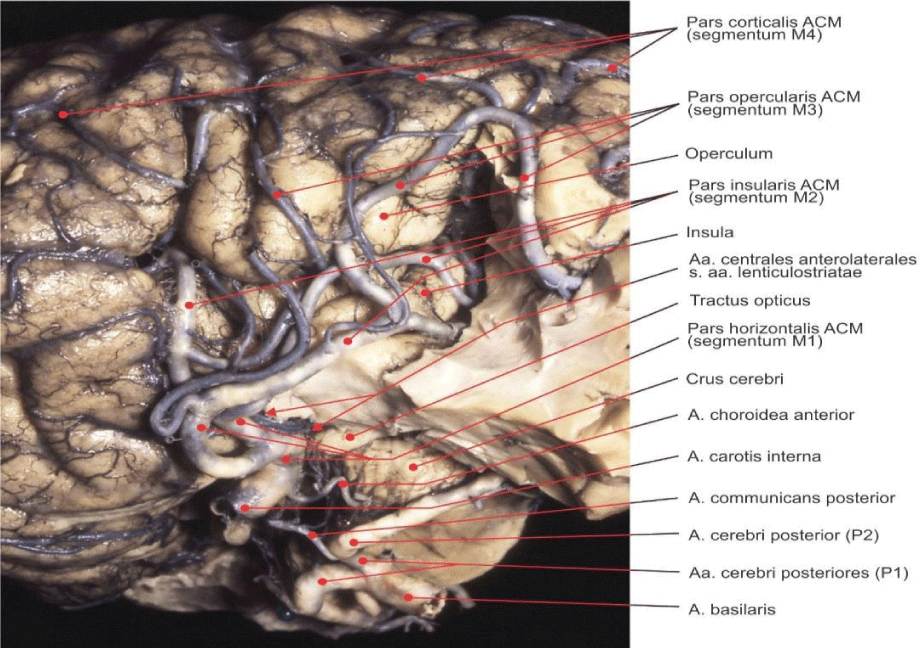
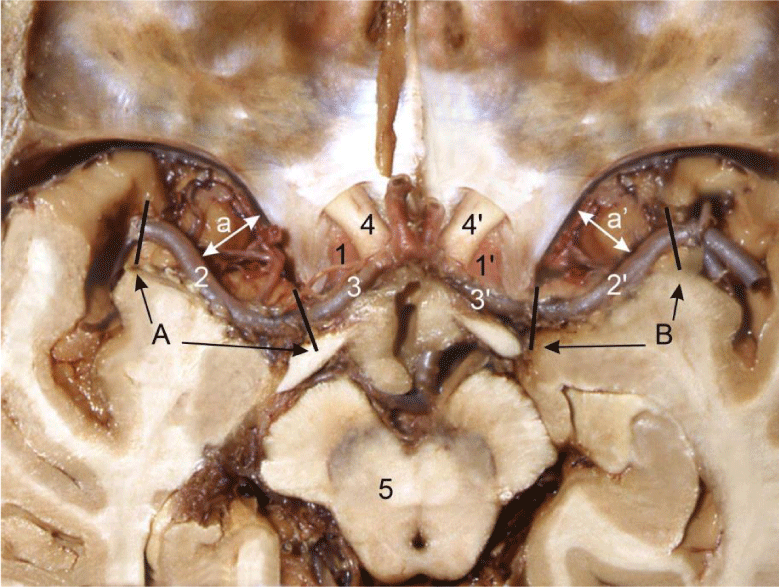
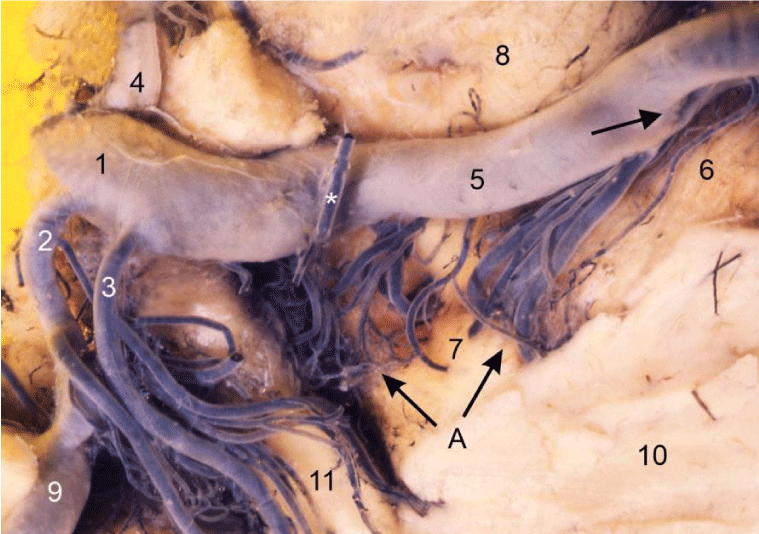
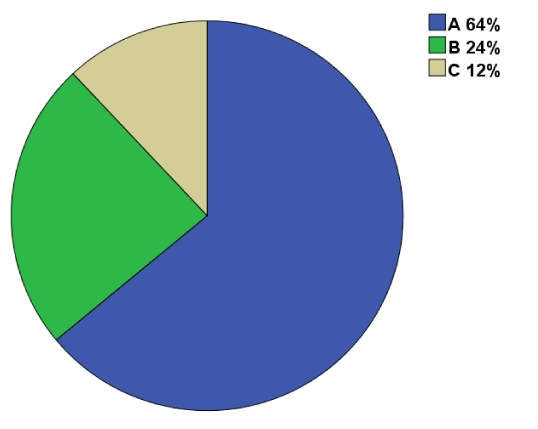
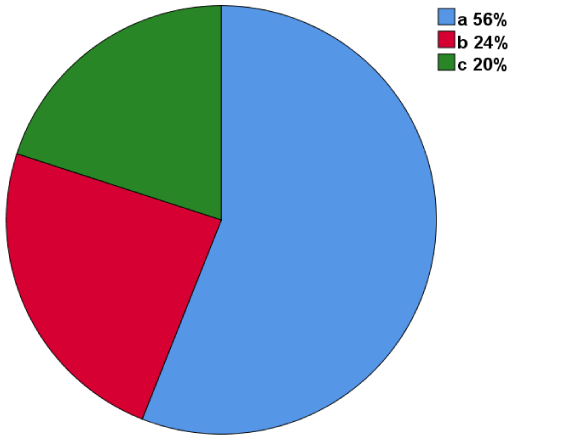

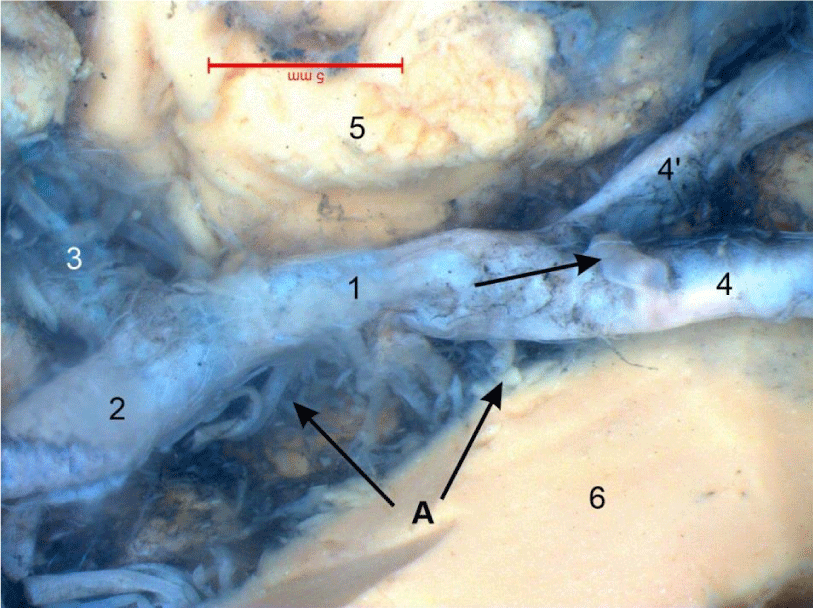


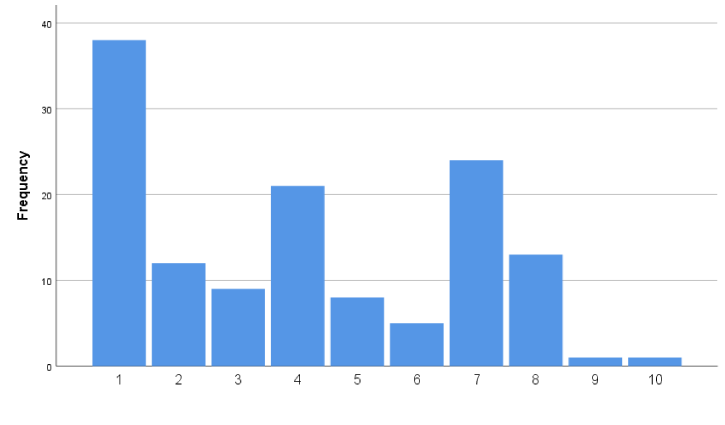
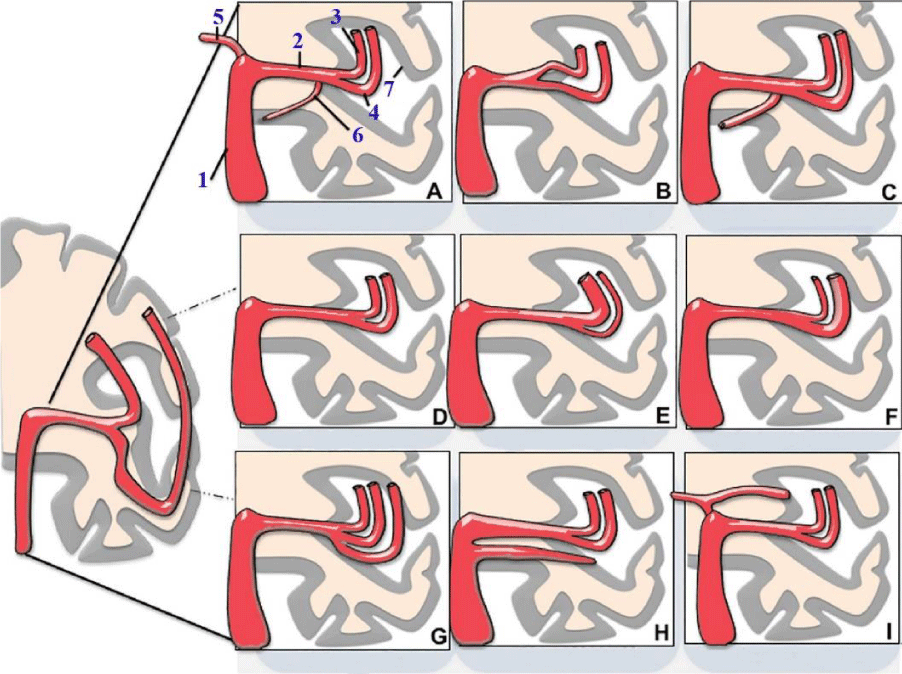

 Save to Mendeley
Save to Mendeley
